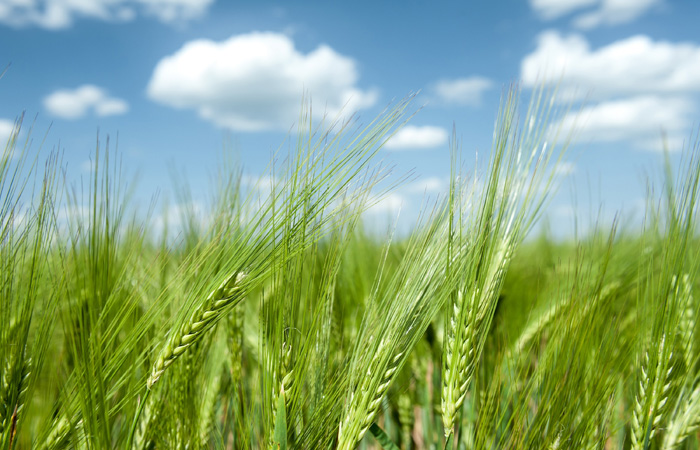More than 23,000 years ago in southeastern Turkey, many wild grasses grew wild. Two of them, wild wheat which we will identify as “AA”, and goat grass “BB”, naturally crossed to produce a perennial wheat called Emmer “AABB”, which is still grown and available today. Each of the parents had 14 chromosomes. Typically when one of the parents would be pollinated, an “A” from each parent would contribute half of the chromosomes and the offspring would have the standard 14 chromosomes and become another “AA”. However, on rare occasions such as happened naturally 23,000 years ago, the chromosomes added up so Emmer wheat had 28 chromosomes, 14 from each parent. This Emmer wheat then crossed with another wild wheat grass in the area known as Aegilops tauschii which introduced the “DD” genes (14 chromosomes) into the new plant. Now we had a plant with 28+14 = 42 chromosomes “AABBDD”, which is our modern bread wheat called Triticum aestivum.
Our modern bread wheat has changed dramatically over 5000 years due to human selection. Early humans certainly collected Emmer wheat for food but the bread wheat had bigger kernels, higher yields and over time didn’t shatter the seeds. At this point it would be called domesticated. Domesticated means that the plant cannot survive on its own but needs humans to pick the seeds and replant them. Wild plants will naturally shatter their seeds, so do not need human help to start the next generation but humans didn’t like picking the seeds off the ground, preferring to pick them off the plant. Over time, this selection pressure of always picking the seeds that stayed on the plant led to our domesticated wheat, where the seeds stay on the plant until long after maturity.
Wheat first made its way to Canada in 1605 where it was produced in Nova Scotia. It got to Ontario in the early 1800’s. David Fife was an early farmer growing wheat in 1842 near Peterborough, Ontario. He was not satisfied with the varieties of wheat he had access to, so he sent a letter to a friend in Scotland who happened to be a dock worker in Glasgow. This friend scooped up a handful of wheat that had just arrived from the Ukraine and sent it to his friend David Fife in Ontario. David was disappointed to find that most of the wheat was a winter wheat; he wanted a spring wheat, but he noticed that a few plants in the winter wheat acted like spring wheat. He saved those and kept replanting until Canada’s first variety called Red Fife was established by the 1860’s. It was the best variety available for about 40 years.
Agriculture Canada researchers, including Dr. Charles Saunders, used Red Fife and crossed it with Hard Red Calcutta to produce the first truly Canadian wheat called Marquis in 1909. Since then, many varieties of wheat have been bred in Canada to keep ahead of diseases and to increase yield and efficiency.
My last research project before I retired from the University of Manitoba, was to plant 45 historical wheat varieties in one plot and watch the results. The aim of the trial was to determine what percent of the yield of wheat (it has increased 120% over the last 100 years) was due to genetics and what percent was due to improved agronomy (fertility, weed control and disease control). I was able to determine that approximately 1/3 of the yield increase came from genetics and 2/3 from agronomy. With the best of modern agronomy, I was able to coax 44 bushels per acre from Red Fife, our very first successful wheat in Canada.




